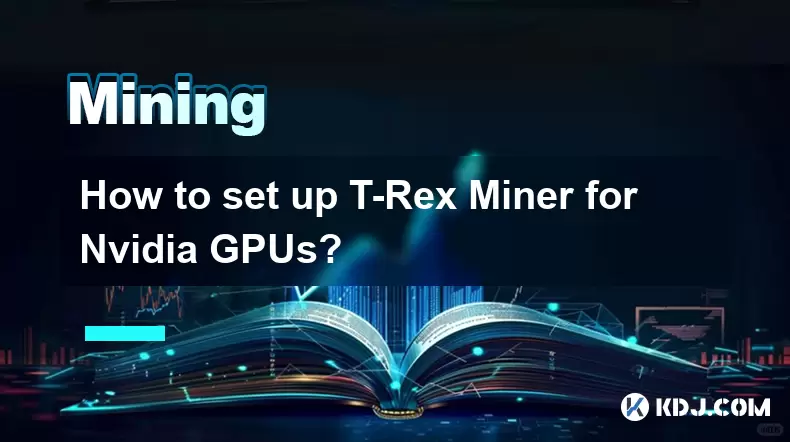-
 Bitcoin
Bitcoin $117700
-1.00% -
 Ethereum
Ethereum $4458
-3.91% -
 XRP
XRP $3.119
0.14% -
 Tether USDt
Tether USDt $1.001
-0.02% -
 BNB
BNB $836.6
-1.56% -
 Solana
Solana $189.5
-3.90% -
 USDC
USDC $0.9998
-0.02% -
 Dogecoin
Dogecoin $0.2335
1.29% -
 Cardano
Cardano $0.9642
1.51% -
 TRON
TRON $0.3539
-1.19% -
 Hyperliquid
Hyperliquid $47.41
-1.84% -
 Chainlink
Chainlink $21.92
-3.28% -
 Stellar
Stellar $0.4286
-0.23% -
 Sui
Sui $3.724
-3.29% -
 Bitcoin Cash
Bitcoin Cash $594.8
-0.78% -
 Ethena USDe
Ethena USDe $1.001
0.04% -
 Hedera
Hedera $0.2501
-2.06% -
 Avalanche
Avalanche $23.96
-4.87% -
 Litecoin
Litecoin $119.0
-2.32% -
 Toncoin
Toncoin $3.473
0.82% -
 UNUS SED LEO
UNUS SED LEO $9.596
0.17% -
 Shiba Inu
Shiba Inu $0.00001301
-0.39% -
 Uniswap
Uniswap $11.03
-0.25% -
 Polkadot
Polkadot $3.935
-2.62% -
 Dai
Dai $1.000
0.01% -
 Bitget Token
Bitget Token $4.564
-1.76% -
 Cronos
Cronos $0.1512
-4.11% -
 Ethena
Ethena $0.7306
-1.09% -
 Pepe
Pepe $0.00001087
-2.68% -
 Aave
Aave $300.2
-4.00%
How to calculate the computing power of an ASIC miner? What is the unit?
To calculate an ASIC miner's computing power, identify the model, check manufacturer specs, use mining calculators, and perform benchmark tests; the unit is hashes per second (H/s).
May 14, 2025 at 11:56 pm

How to Calculate the Computing Power of an ASIC Miner? What is the Unit?
Understanding the computing power of an ASIC miner is crucial for anyone involved in cryptocurrency mining. This article will guide you through the process of calculating the computing power of an ASIC miner, explaining the units used, and providing detailed steps to ensure you have a comprehensive understanding of this important metric.
What is Computing Power in ASIC Mining?
Computing power, often referred to as hash rate, is a measure of the number of calculations an ASIC miner can perform per second. This metric is essential because it directly affects the efficiency and profitability of mining operations. The higher the hash rate, the more guesses the miner can make to solve the cryptographic puzzle required to validate transactions and add them to the blockchain.
Units of Computing Power
The unit of computing power in ASIC mining is typically measured in hashes per second (H/s). However, due to the high computational requirements of modern cryptocurrencies, larger units are commonly used:
- Kilohash per second (KH/s): 1,000 H/s
- Megahash per second (MH/s): 1,000,000 H/s
- Gigahash per second (GH/s): 1,000,000,000 H/s
- Terahash per second (TH/s): 1,000,000,000,000 H/s
- Petahash per second (PH/s): 1,000,000,000,000,000 H/s
Understanding these units is crucial for accurately assessing the performance of your ASIC miner.
How to Calculate the Computing Power of an ASIC Miner
Calculating the computing power of an ASIC miner involves several steps. Here’s a detailed guide to help you through the process:
Identify the Model of Your ASIC Miner: Start by determining the exact model of your ASIC miner. Different models have different specifications, and knowing the model will help you find the right data.
Check the Manufacturer’s Specifications: Most manufacturers provide detailed specifications for their ASIC miners, including the hash rate. You can find this information on the manufacturer’s website or in the product manual.
Use a Mining Calculator: There are various online mining calculators available that can help you estimate the hash rate of your ASIC miner based on its model and other factors like power consumption and the cryptocurrency being mined.
Perform a Benchmark Test: To get a more accurate measure of your ASIC miner’s computing power, you can perform a benchmark test. This involves running the miner for a set period and measuring the number of hashes it performs.
Calculate the Hash Rate: Once you have the data from the benchmark test, you can calculate the hash rate. For example, if your miner performed 1,000,000,000,000 hashes in one second, its hash rate would be 1 TH/s.
Factors Affecting Computing Power
Several factors can affect the computing power of an ASIC miner:
Temperature: High temperatures can cause the miner to throttle its performance to prevent overheating.
Power Supply: The quality and capacity of the power supply can impact the miner’s performance. An inadequate power supply can lead to reduced hash rates.
Firmware and Software: The firmware and software used to operate the miner can also affect its computing power. Regular updates can improve performance.
Age and Wear: Over time, the components of the ASIC miner may wear out, leading to a decrease in computing power.
Tools and Resources for Calculating Hash Rate
There are several tools and resources available to help you calculate the hash rate of your ASIC miner:
Online Mining Calculators: Websites like WhatToMine and Coinwarz offer calculators that can estimate your miner’s hash rate based on its specifications and the cryptocurrency being mined.
Mining Software: Some mining software, like CGMiner and EasyMiner, can provide real-time data on your miner’s hash rate.
Manufacturer’s Tools: Some manufacturers offer proprietary tools to monitor and optimize the performance of their ASIC miners.
Practical Example of Calculating Hash Rate
Let’s walk through a practical example of calculating the hash rate of an ASIC miner:
Choose Your ASIC Miner: Suppose you have a Bitmain Antminer S19 Pro.
Find the Manufacturer’s Specifications: According to Bitmain, the Antminer S19 Pro has a hash rate of 110 TH/s.
Perform a Benchmark Test: Run the miner for one minute and measure the total number of hashes performed. Let’s say the miner performed 6,600,000,000,000,000 hashes in one minute.
Calculate the Hash Rate: To find the hash rate, divide the total number of hashes by the time taken. 6,600,000,000,000,000 hashes / 60 seconds = 110,000,000,000,000 H/s, which is equivalent to 110 TH/s.
This example demonstrates how to calculate the hash rate of an ASIC miner using both the manufacturer’s specifications and a benchmark test.
Frequently Asked Questions
Q: Can the hash rate of an ASIC miner change over time?
A: Yes, the hash rate of an ASIC miner can change over time due to factors such as wear and tear, temperature, and firmware updates. Regular maintenance and monitoring can help maintain optimal performance.
Q: Is it possible to increase the hash rate of an ASIC miner?
A: While the hash rate of an ASIC miner is largely determined by its hardware, you can optimize it by ensuring proper cooling, using a high-quality power supply, and keeping the firmware up to date.
Q: How does the hash rate affect mining profitability?
A: The hash rate directly affects mining profitability because it determines how many guesses the miner can make to solve the cryptographic puzzle. A higher hash rate increases the chances of solving the puzzle and earning the block reward.
Q: Can different cryptocurrencies affect the hash rate of an ASIC miner?
A: Yes, different cryptocurrencies can affect the hash rate of an ASIC miner because they may use different cryptographic algorithms. An ASIC miner optimized for one algorithm may not perform as well on another.
Disclaimer:info@kdj.com
The information provided is not trading advice. kdj.com does not assume any responsibility for any investments made based on the information provided in this article. Cryptocurrencies are highly volatile and it is highly recommended that you invest with caution after thorough research!
If you believe that the content used on this website infringes your copyright, please contact us immediately (info@kdj.com) and we will delete it promptly.
- Kazakhstan's Crypto Leap: Bitcoin ETF and Central Asia's Digital Finance Future
- 2025-08-13 12:45:19
- BlockDAG Presale Blazes Past $371M: Fundraising Frenzy Fuels Crypto Sensation
- 2025-08-13 13:05:21
- Meme Coins: Chasing the 2025 Surge – Which Will Moonshot?
- 2025-08-13 10:25:23
- Bitcoin's Wild Ride: Rally, Pullback, and What's Next
- 2025-08-13 10:25:23
- Bitcoin, Bitmax, and Institutional Demand: A New Era of Crypto Investment
- 2025-08-13 10:45:12
- Solana, ROAM, and Airdrops: What's the Buzz in 2025?
- 2025-08-13 11:35:13
Related knowledge

How to configure Phoenix Miner for AMD GPUs?
Aug 11,2025 at 03:21am
Understanding Phoenix Miner and Its Compatibility with AMD GPUsPhoenix Miner is a lightweight, high-performance Ethereum mining software designed for ...

How to set up T-Rex Miner for Nvidia GPUs?
Aug 10,2025 at 12:07am
Understanding T-Rex Miner and Its Compatibility with Nvidia GPUsT-Rex Miner is a high-performance mining software designed specifically for Nvidia GPU...

What is "proof-of-work" and how does it relate to mining?
Aug 07,2025 at 02:03pm
Understanding the Concept of Proof-of-WorkProof-of-work (PoW) is a consensus mechanism used in blockchain networks to validate transactions and secure...

How to choose a crypto wallet for your mined coins?
Aug 13,2025 at 11:36am
Understanding the Types of Crypto Wallets for Mined CoinsWhen selecting a crypto wallet for your mined coins, the first step is to understand the diff...

What are the differences between mining on Windows vs. Linux?
Aug 06,2025 at 11:29pm
Overview of Cryptocurrency Mining PlatformsCryptocurrency mining involves using computational power to solve complex cryptographic puzzles and validat...

How to use an old computer for cryptocurrency mining?
Aug 07,2025 at 12:42pm
Understanding the Feasibility of Using an Old Computer for MiningUsing an old computer for cryptocurrency mining may seem outdated, but it is still te...

How to configure Phoenix Miner for AMD GPUs?
Aug 11,2025 at 03:21am
Understanding Phoenix Miner and Its Compatibility with AMD GPUsPhoenix Miner is a lightweight, high-performance Ethereum mining software designed for ...

How to set up T-Rex Miner for Nvidia GPUs?
Aug 10,2025 at 12:07am
Understanding T-Rex Miner and Its Compatibility with Nvidia GPUsT-Rex Miner is a high-performance mining software designed specifically for Nvidia GPU...

What is "proof-of-work" and how does it relate to mining?
Aug 07,2025 at 02:03pm
Understanding the Concept of Proof-of-WorkProof-of-work (PoW) is a consensus mechanism used in blockchain networks to validate transactions and secure...

How to choose a crypto wallet for your mined coins?
Aug 13,2025 at 11:36am
Understanding the Types of Crypto Wallets for Mined CoinsWhen selecting a crypto wallet for your mined coins, the first step is to understand the diff...

What are the differences between mining on Windows vs. Linux?
Aug 06,2025 at 11:29pm
Overview of Cryptocurrency Mining PlatformsCryptocurrency mining involves using computational power to solve complex cryptographic puzzles and validat...

How to use an old computer for cryptocurrency mining?
Aug 07,2025 at 12:42pm
Understanding the Feasibility of Using an Old Computer for MiningUsing an old computer for cryptocurrency mining may seem outdated, but it is still te...
See all articles

























































































